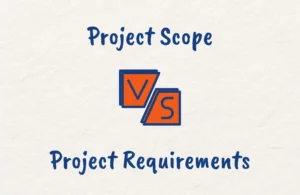Communication is an integral part of project management and it is estimated that as a project manager, you spend about 80% of your time on communication when managing a project.
Communication has different approaches and strategies, and an understanding of the push and pull communication modes is essential when managing projects and teams.
In this post, we’ll overview the core concepts of push vs pull communication. You’ll learn the key differences between the two approaches, and when to use each approach, as well as examples of each.
Also, an understanding of these communication approaches in project management is essential if you are preparing for the PMP certification examination as you can expect questions from this topic.
What is Push Communication in Project Management?
Push communication is a one-way style of communication where information is sent out to recipients without them explicitly requesting or opting in to receive it.
The sender determines the message and medium and simply pushes the information out rather than waiting for a pull request from recipients.
With push communication, the sender has control over what information is shared and when, and the recipients may not have control over the frequency or relevancy of the messages received.
Push communication works well for distributing information widely to large audiences who may benefit from receiving the same updates although it can lead to information overload if not managed well.

Push Communication Examples
Examples of push communication include newsletters, reports, announcements, alerts, and advertising.
In these mediums, information flows outward on the sender’s timeline. as the sender pushes the message out on their own initiative rather than waiting for a pull request from recipients.
What is Pull Communication in Project Management?
Pull communication is a two-way style of communication where recipients proactively seek out the information they need.
Rather than having information pushed to them, they pull the information by requesting it from the source.
With pull communication, recipients can control when and what information they access, while senders provide information in response to explicit requests so the information is more likely to be relevant and desired by the recipients.
However, the onus is on recipients to identify their information needs and pull the right data. If recipients don’t know what information exists or how to request it, they may miss out.
While pull communication empowers recipients to get specific, timely information when they need it, it however requires recipients to actively seek out information.

Pull Communication Examples
Examples of pull communication include search engines, questions, help desk tickets, and document requests.
For these mediums, the information flows inward toward the requester as the recipients pull information as they need it rather than having a standardized message broadcast to them.
What is the Difference Between Push and Pull Communication?
In push communication, the exchange is initiated by the sender by sending a message without an explicit request from the receiver.
On the other hand, in pull communication, it is the receiver who initiates the exchange by requesting information from the sender, while the receiver pulls the information from the sender when needed.

When to Use Push Communication in Project Management
Push communication can be very effective when used strategically in project management.
Some examples of when to use push communication include when:
- Announcing the Project and Major Milestones: Pushing out a clear message to all project stakeholders ensures everyone receives the same information about project goals, timelines, roles, and responsibilities.
- Sharing Status Updates: Pushing regular project status reports allows you to proactively inform stakeholders of progress made, risks identified, and any decisions or help needed.
- Broadcasting Schedule Changes: Pushing schedule changes and deadline reminders helps keep everyone on track.
- Distributing Documentation: Pushing out plans, specifications, policies, and procedures makes sure everyone has access to the same foundational information.
- Marketing the Project: Pushing out emails, announcements, and flyers to publicize the project helps drive awareness and build buy-in.
The key is to strategically push out the right information to the right audiences when a centralized broadcast is beneficial as too much non-essential information risks communication fatigue.

When to Use Pull Communication in Project Management
Pull communication puts stakeholders in control of getting specific information when they need it.
It prevents overload and makes sure communication is relevant and actionable and should be used to complement broader push communication.
Pull communication is extremely useful for certain needs in project management including when:
- Collecting Inputs and Feedback: Surveys, interviews, and comment forms allow stakeholders to pull information and provide input on requirements, designs, plans, etc.
- Crowdsourcing Solutions: Enabling stakeholders to pull knowledge from shared repositories crowdsources problem-solving.
- On-demand Updates: Project portals and shared drives allow stakeholders to pull status reports, documents, etc. as needed rather than being flooded with emails.
- Troubleshooting Issues: Pulling expertise through meetings, email queries, and help desk tickets helps resolve issues.
- Checking Understanding: Pulling knowledge through discussions and questions ensures alignment rather than making assumptions.
- Personalized Communication: One-on-one conversations allow tailored communication instead of blanket statements.

Push vs Pull Communication Comparison
Let’s do a head-to-head comparison to highlight the main differences between push and pull communication strategies in project management, providing a clear understanding of when and how each method can be optimally used.
| Aspect | Push Communication | Pull Communication |
| Definition | Communication is made available in a central location where recipients can access it if they need or want it. | The sender has control over the timing and distribution of the information. |
| Control | This can lead to information overload if not managed properly. | Recipients have control over the timing of accessing the information. |
| Examples | Emails, memos, reports, letters, voice mails, meetings, and presentations. | Intranet sites, bulletin boards, knowledge bases, shared documents, and repositories. |
| Efficiency | Efficient for ensuring specific individuals receive the information. | Efficient when information needs to be disseminated to a large number of people or is frequently updated. |
| Recipient Engagement | Lower, as recipients are passive receivers. | Higher, as recipients actively seek out the information. |
| Scalability | Can be less scalable as it requires the sender to distribute information to each recipient individually. | More scalable as it allows many recipients to access the information at their convenience. |
| Feedback | Easier to obtain immediate feedback from the recipient. | Feedback is not immediate and may require additional follow-up to gauge recipient understanding. |
| Best Used When | Urgent information needs to be communicated, or when confirmation of receipt and understanding is necessary. | Information is not time-sensitive, or when it is useful for recipients to access it at their own pace. |
| Audience | Suitable for targeted communication to specific individuals or groups. | Suitable for a broad audience where members opt-in to receive the information. |
| Interactivity | Typically one-way, from sender to receiver. | Can be two-way if a feedback mechanism is implemented, but often designed for one-way communication. |
| Information Overload | Can lead to information overload if not managed properly. | Reduces the risk of information overload, as recipients choose what to access. |
| Customization | Messages can be tailored to the needs of each recipient or group. | Information is generally not tailored to individual needs but rather to a general audience. |
Conclusion
As a project manager, understanding the concept and differences between push and pull communication is key to enabling you to leverage the right modes at the right times and ensure effective communication throughout your projects.
Use push communication to broadcast key messages widely, and switch to pull communication when you need targeted inputs.
Finding the optimal communication strategy requires planning and experience. With practice, you’ll become adept at discerning when your project needs a push or pull.





